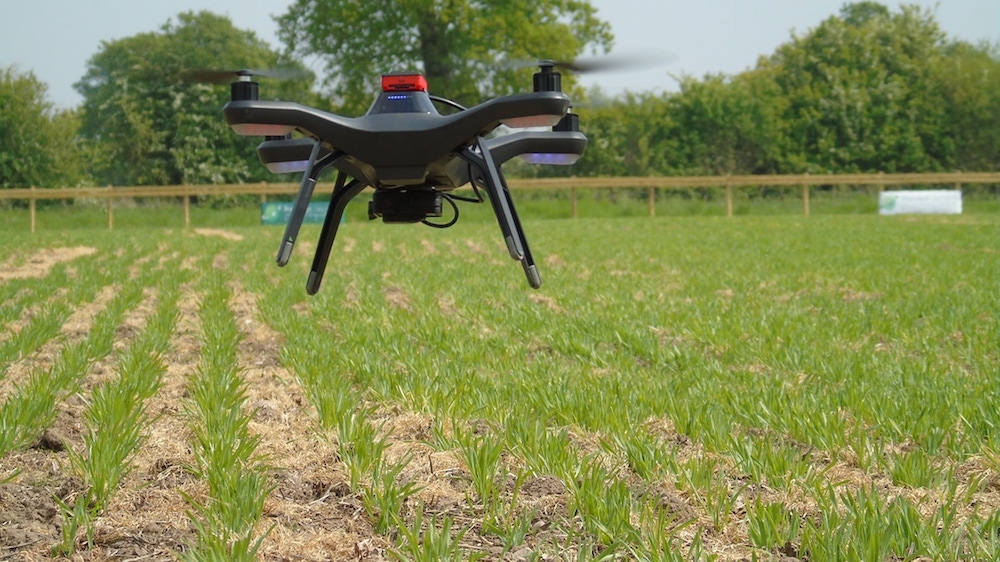Robotic Farm Completes 1st Fully Autonomous Harvest

It's harvest season in many parts of the world, but on one farm in the United Kingdom, robots — not humans — are doing all the heavy lifting.
At Hands Free Hectare, an experimental farm run by researchers from Harper Adams University, in the village of Edgmond in the U.K., about 5 tons (4.5 metric tons) of spring barley have been harvested from the world’s first robotically tended farm. Everything from start to finish — including sowing, fertilizing, collecting samples and harvesting — has been done by autonomous vehicles on the farm, according to the researchers.
The team behind the project thinks that robotic technology could improve yields in agriculture, which is necessary if the world's growing population is to be fed in coming years. [Super-Intelligent Machines: 7 Robotic Futures]
The researchers tackled this problem by using commercially available agriculture machines and open-source software that is used to guide hobbyists’ drones.
"In agriculture, nobody has really managed to solve the problem of autonomy," said Jonathan Gill, mechatronics researcher at Harper Adams University, who led the project."We were like, Why is this not possible? If it's possible in drone autopilots that are relatively cheap, how come there are companies out there that are charging exorbitant amounts of money to actually have a system that just follows a straight line?"
The researchers purchased several small-size agricultural machines, including a tractor and a combine, a machine for harvesting grain crops. They then fitted the machines with actuators, electronics and robotic technology that would allow them to control the machines without the presence of a human operator.
"The first stage was to make it radio controlled," Gill said. "This was our first step towards autonomy. From that point, we moved on to preprogram all the actions that need to be performed into the autopilot system."
Sign up for the Live Science daily newsletter now
Get the world’s most fascinating discoveries delivered straight to your inbox.
Gill's collaborator, Martin Abell, who works for Precision Decisions, an industrial agricultural company that partners with the university, explained that the system follows a certain trajectory with preprogrammed stops to perform certain actions.
"The vehicles navigate entirely based on the GPS, and they are just essentially driving towards targets that we predetermined," Abell said. "At different GPS targets, there are different actions designed to be carried out."
Abell said the researchers struggled to make the machines follow a straight line, which initially resulted in quite a lot of crop damage. However, the scientists think they will be able to fix the problem in the coming years and will eventually achieve better yields than a conventionally maintained farm of the same size could produce.
To monitor the field and take samples of the plants, the researchers developed special grippers attached to drones. As the drone flies above the field, the grippers can cut off some samples and deliver them to the researchers.
The scientists said that the robotic technology could enable future farmers to more precisely distribute fertilizers and herbicides, but could also lead to improvements in soil quality. Currently, to achieve all the required tasks in a reasonable amount of time, farmers rely on very large and heavy machines. In the future, they could use flocks of smaller robotic tractors and harvesters, the researchers said.
The farmer would, for example, be able to apply fertilizer only to the plants that are doing poorly and wouldn’t waste it on those that don't need it, the researchers explained.
"At the moment, the machines used in agriculture are large, they operate quickly, they cover large areas of ground quickly, but with it comes inaccuracy," Abell said. "Small machines working with smaller working widths would provide a means to bring the resolution down. Instead of a 100-foot (30 meters) sprayer, you would have a 20-foot (6 m) sprayer, and that’s just the beginning of making things smaller."
The Harper Adams team plans to use the robotically harvested spring barley to make a limited batch of "hands-free" beer that will be distributed to the project’s partners as a token of thanks.
In the coming years, they want to focus on improving the precision of the procedures and quantify the effects of the robotic technology on the yields.
Original article on Live Science.











